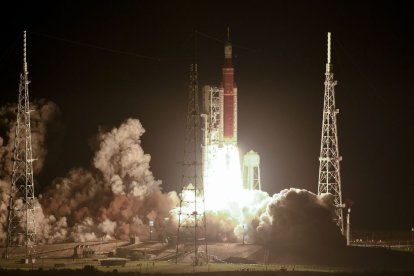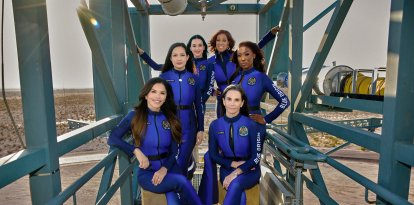NASA: Artemis I is on its way to the moon
The rocket, which was supposed to begin its journey in August, lifted off Wednesday from Cape Canaveral where thousands of people gathered to watch the launch.

(Cordon Press)
The third time was the charm. It took three attempts, but on Wednesday, NASA succeeded in getting Artemis I to begin its journey to the moon. It was due to take off in August, but an engine leak prevented the mission from starting.
The second attempt was made just a few days later, on September 3. Technical problems once again prevented the rocket from taking off from Cape Canaveral, Florida. This time, however, the Artemis I was able to take off and NASA celebrated by posting this tweet:
The launch did not seem like it would be possible until minutes before liftoff. Hurricane Ian had forced the rocket to be stored indoors to protect it from weather during the month of September. However, it was not spared from Hurricane Nicole, which caused some damage. However, it did not prevent Artemis I from being launched into space.
Nearly 15,000 people crammed into the Kennedy Space Center to watch the spacecraft take off live. Launch Director Charlie Blackwell-Thompson said: "This is for the Artemis generation, this is for you," during NASA's live broadcast of the launch on social media.
She also dedicated a few words to the team in charge of the successful operation of the rocket. She thanked them for their hard work over the months, which was fundamental to getting Artemis I off the ground:
Orion, the capsule on top of the rocket, is expected to orbit the moon for three weeks. It is set to return to Earth on December 11. If all goes according to plan, it will land in the Pacific Ocean where a team will be waiting. The mission can be followed live on NASA's website.
This unmanned mission is the first step towards man's return to the moon. The only time it was achieved was in 1969 when Apollo 11 landed on the moon and Neil Armostrong uttered the symbolic phrase: "That's one small step for man, one giant leap for mankind." Just 53 years later, that moment could be close to repeating itself.
RECOMMENDATION





















